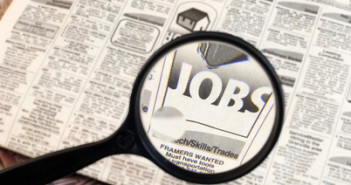US Non-Farm Payrolls rose by only 69K. The unemployment rate is at 8.2%. Last month’s was revised to 8.2% as well. Early expectations stood on a gain of about 150K jobs, better than last month’s initial report of +115K (which was partially offset by nice revisions and now sharply revised down to +77K). It’s important to note that after yesterday’s weak figures, expectations were actually a bit lower but not that bad.
The reaction is strong risk aversion to this disappointment: EUR/USD is plunging, and so is USD/JPY – which is already close to support at 77.50.  Trading is very choppy and the euro made a comeback for now.
AUD/USD dipped under 0.96 before bouncing. USD/CAD is on the rise, jumping above 1.04 and also resistance at 1.0423. This is also due to weak Canadian GDP published at the same time: only +0.1% instead of +0.4% expected.
Update: EUR/USD made a massive comeback after the initial fall. Here are 5 reasons for the euro comeback. Update 2: the roller coaster continues with the pair falling back down in one of the most volatile NFP price actions seen in months.
More Numbers
- This is the weakest NFP number since September 2010. and also below the most pessimistic analyst surveyed. It couldn’t be worse. Also revisions were to the downside this time, after many months of upwards revisions.
- U-6: Another worrying number can be found in the real unemployment rate, U-6, which includes also discouraged workers. It rose from 14.5% to 14.8%.
- Some good news could be found in the participation rate: it rose back to 63.8%, erasing previous falls. Also the employment-population ratio is back up to 58.6%. This is Bernanke’s preferred figure.
- Revisions: Last month’s number was only +77K. March’s figure was revised down from 154K to 154K.
- More disappointments: Average Hourly Earning rose by only 0.1% (+0.2% expected). Personal Spending rose by 0.3% as expected. Personal Income disappointed with only +0.2% (+0.4% predicted). The Core PCE Price Index fell short with only +0.1% instead of 0.2%.
Implications
- Risk aversion: when Europe is close to the cliff and China is slowing, bad US news just boosts safe haven currencies such as the dollar and the yen
- QE3: This figure in itself isn’t sufficient for making a decision on more dollar printing, as inflation isn’t low and the effect of more bond buying with ultra low bonds is limited, but the Fed might want to be seen as “doing somethingâ€
- GDP: After Q1 was revised to the downside, it won’t be surprising to see Q2 show no growth at all. Perhaps not an outright recession right now, but quite close.
Background
Expectations were somewhat lowered after some disappointments from ADP and jobless claims. Weekly claims, which were very steady around 370K, rose to 383K. ADP Non-Farm Payrolls for the private sector showed a gain of only 133K. Not only was it below expectations, but it showed that the gains are settling on lower ground. The trend is correlated with the Non-Farm Payrolls in the long run.
Contrary to previous releases, this one came on the first day of the month, before the publication of the ISM PMIs. These provide good guidance, especially the employment component. The manufacturing PMI will be released later today, and the figure for the larger services sector will wait for the next week.
Gains were much stronger during the winter months of December to February, when gains easily passed the 200K mark. This was “blamed†on exceptionally warm winter months. The initial slide in gains seemed like a temporary thing at first, but as time passes by, there is a clear slowdown.
The unemployment rate fell nicely in recent months and hit 8.1% in April. This was the effect of job gains, a drop in the unemployment rate and the aforementioned warm weather. The month of May is already deep into the spring, and these effects are over.
Further reading:Â EUR/USD: Trading the Non-Farm Payrolls



